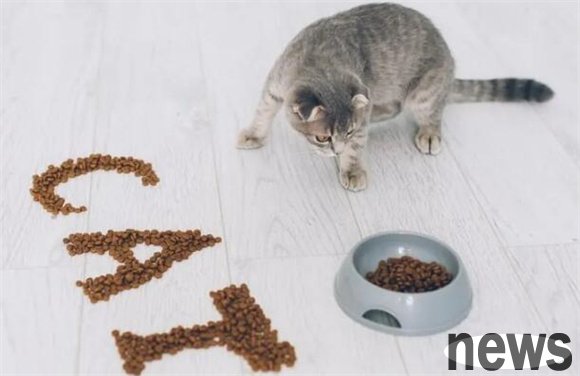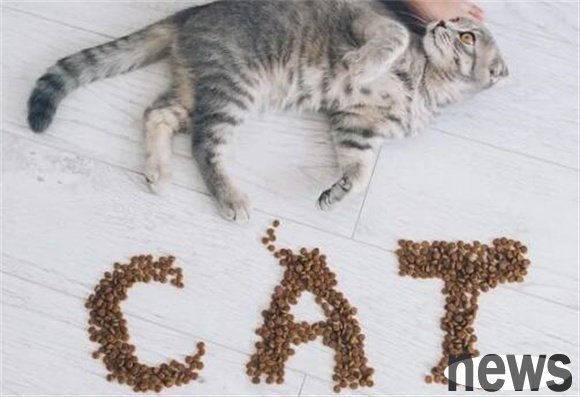It is not a good practice to have cat food in the cat bowl. Over-supply of food can cause cats to be overweight or obese, and also increase the risk of food contamination. It is usually recommended to give food regularly according to the cat's d...
It is not a good practice to have cat food in the cat bowl. Over-supply of food can cause cats to be overweight or obese, and also increase the risk of food contamination. It is usually recommended to give food regularly according to the cat's dietary needs, rather than allowing the cat to eat anytime, anywhere. This helps to control your food, keep your cat healthy, and can help develop good eating habits. So what harm will put cat food in cat food for a long time bring to cats?
1. Obesity risk
Let cats eat freely (food is available at any time, so cat food is always available in cat bowls) can easily cause cats to consume too much calories, which in turn causes obesity. Obesity increases the risk of cats suffering from health problems such as diabetes, arthritis and heart disease. In addition, obesity can also lead to a decrease in cats' mobility and affect their daily quality of life. In order to avoid these health problems, owners should adopt regular and regular feeding methods to ensure that the cat consumes appropriate amounts of calories and nutrition and maintains a healthy weight.

2. Poor eating habits
If cats have food to eat at any time, they may develop bad eating habits, such as picky eating or eating too quickly. Picky eating can cause unbalanced nutrition in the cat, while eating too fast can cause digestive problems and even vomiting. In addition, excessive laissez-free diet can also interfere with cats' normal hunger and eating rules, further affecting their health and behavior.
3. Food pollution
Cat food exposed to the air for a long time is prone to moisture, spoilage or attract pests. Such food will affect the health of cats. Moist cat food will not only lose its original flavor and nutrition, but may also breed mold, which will have a negative impact on the cat's digestive system. Spooked cat food may contain harmful bacteria or toxins, which in turn causes gastrointestinal discomfort in the cat or more serious health problems. In addition, cat food that attracts pests will also bring hygiene risks, further threatening the cat's dietary safety and health.
4. Dental health problems
Although dry cat food can help clean teeth, if the cat has food to eat at any time, it may reduce the time to chew the dry food, which will affect teeth health. Chewing dry cat food can promote saliva secretion, helps self-cleaning in the mouth and maintains dental health. But if the cat is used to swallowing food quickly, the benefit may not be obtained, increasing the risk of tartar and gum problems. Therefore, controlling the intake and frequency of cat food can help keep their oral health.
5. Not conducive to health monitoring
Regular and quantitative feeding can help the owner monitor the cat's food and appetite changes and promptly detect health problems. If the cat has food to eat at any time, the owner may find it difficult to detect changes in the cat's appetite. Loss of appetite can be an early sign of health problems, such as digestive problems, dental problems, or other diseases. Through regular feeding, the owner can more easily observe the cat's eating habits and food, detect abnormalities in a timely manner and seek medical treatment in a timely manner. Therefore, regular and regular feeding is very important for the health of cats.
6. Difficulty in controlling weight
Free eating makes it difficult for the owner to control the cat's food, making it difficult for the owner to manage and control the cat's weight. Long-term intake of too much food can lead to obesity, which will not only affect the health of the cat, but may also cause a series of related diseases, such as diabetes, heart disease, arthritis, etc. Therefore, quantitative feeding helps control the cat's weight and maintains its health. At the same time, quantitative feeding can also help the owner better understand the cat's eating habits and health status, detect abnormal situations in a timely manner and take measures.

In short, although it seems convenient to have cat food in the cat bowl, it may bring a series of health problems to the cat. Obesity risks, poor eating habits, food contamination, dental health problems and difficulty in monitoring health conditions are all potential harms caused by long-term free eating. For the long-term health of the cat, it is recommended that the owner adopt regular and regular feeding methods to provide high-quality cat food and keep the cat bowl and drinking water utensils clean. This not only helps control the cat's weight, but also promptly detects and deals with any health problems, ensuring that the cat thrive in a safe and healthy environment.